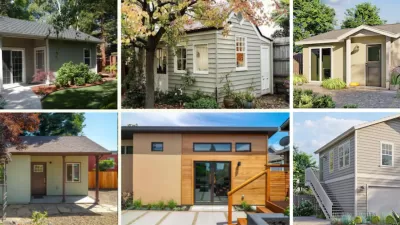The state recently legalized accessory dwelling units in residential districts, but there’s more state lawmakers can do to reduce other hurdles to large-scale ADU production.

An analysis from the Niskanen Cetner by George Ashford, Andrew Justus, Alex Armlovich reveals lessons for Hawaii based on California’s legalization of accessory dwelling units (ADUs), which Hawaii legalized earlier this year.
More states and cities are encouraging the construction of ADUs as one way to boost the housing supply, gently increase density in residential areas, and offer an avenue for homeowners to earn extra income. In Hawaii, SB3203 requires the creation of new zoning districts that permit at least two ADUs on single-family lots.
“Unlike in California, where pro-housing legislators have spent nearly a decade easing ADU restrictions, Hawaii law allows local governments to set restrictive development standards for ADUs. This is not uncommon; most states making their first effort to allow ADUs leave exploitable loopholes, which result in underwhelming initial outcomes.” The authors suggest that Hawaii should follow California’s lead to ensure that local governments don’t impose undue burdens on potential ADU builders.
The article highlights California’s successes, noting that “California saw nearly 28,000 ADU permits in 2023, constituting 21% of total housing permits for that year.” To address restrictions that hold back ADU development like minimum lot sizes, floor-area ratio, street frontage, and setback requirements, California passed a ‘statewide exemption ADU’ that sets standards for ADUs that override local regulations. “In other words, it requires local governments to waive requirements that would make a reasonably sized ADU infeasible.”
The analysis addresses other hurdles including unnecessary fees, parking requirements, and owner-occupancy requirements, which can also limit the effectiveness of ADU legalization. To further streamline the development process, California also requires cities to create a set of pre-approved building plans that homeowners can choose from to avoid lengthy permitting processes. This type of policy can both reduce costs for homeowners and let cities have more influence over aesthetics and design.
FULL STORY: What Hawaii can learn from California’s long and bumpy road to ADU stardom

Alabama: Trump Terminates Settlements for Black Communities Harmed By Raw Sewage
Trump deemed the landmark civil rights agreement “illegal DEI and environmental justice policy.”

Planetizen Federal Action Tracker
A weekly monitor of how Trump’s orders and actions are impacting planners and planning in America.

The 120 Year Old Tiny Home Villages That Sheltered San Francisco’s Earthquake Refugees
More than a century ago, San Francisco mobilized to house thousands of residents displaced by the 1906 earthquake. Could their strategy offer a model for the present?

LA’s Tree Emergency Goes Beyond Vandalism
After a vandal destroyed dozens of downtown LA trees, Mayor Karen Bass vowed to replace them. Days later, she slashed the city’s tree budget.

Sacramento Leads Nation With Bus-Mounted Bike Lane Enforcement Cameras
The city is the first to use its bus-mounted traffic enforcement system to cite drivers who park or drive in bike lanes.

Seattle Voters Approve Social Housing Referendum
Voters approved a corporate tax to fund the city’s housing authority despite an opposition campaign funded by Amazon and Microsoft.
Urban Design for Planners 1: Software Tools
This six-course series explores essential urban design concepts using open source software and equips planners with the tools they need to participate fully in the urban design process.
Planning for Universal Design
Learn the tools for implementing Universal Design in planning regulations.
Ada County Highway District
Clanton & Associates, Inc.
Jessamine County Fiscal Court
Institute for Housing and Urban Development Studies (IHS)
City of Grandview
Harvard GSD Executive Education
Toledo-Lucas County Plan Commissions
Salt Lake City
NYU Wagner Graduate School of Public Service





























